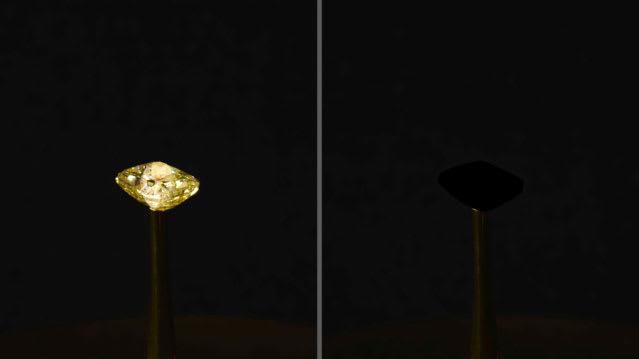blackest
Latest

MIT scientists accidentally create the blackest material ever
Good news for goths -- black somehow just got even blacker. MIT engineers have cooked up a material that's 10 times blacker than anything else previously reported. Capturing more than 99.995 percent of any incoming light, the material is made of vertically aligned carbon nanotubes (CNTs) grown on chlorine-etched aluminium foil. And it was discovered by accident.

Scientists made the blackest material ever
Scientists may have made a breakthrough in materials that can help manipulate light at nanoscale, but is it really, really, really black? No. Researchers at Saudi Arabia's King Abdulla University of Science and Technology have created a carbon-nanotube material that absorbs 98 to 99 percent of light (at all angles) between 400 and 1,400nm. But there's actually a reason why something that black needs to exist. These absorbers take on important roles when it comes to solar power absorption and optical interconnects, where fiberoptic data is being passed around. Researchers were able to put a small concentration of their special nanoparticles into a solution, which gave 26 percent more absorption than carbon nanotube -- the previous prince of (material) darkness. For now, there's none more black.

This new carbon nanotube material is the darkest thing on the planet
We know what darkness is: it's the absence of light, and something we each encounter when the sun goes down. Seeing darkness in broad daylight on the other hand, that's weird. It's also, astonishingly, a completely possible thing. Sitting on a piece of aluminum foil in Surrey NanoSystems' lab is something called Vantablack -- a low-temperature carbon nanotube material that absorbs 99.96% of all light that touches it. It's effectively the darkest material on the planet, and anything draped in becomes non-reflective, losing any and all surface detail. So, what's the point? This new ultra dark material uses a low-temperature process, which allows it to be applied to things like stealth vehicles or telescopes, allowing them to avoid detection or see farther, respectively. The firm says it's scaling up production for customers in the defense and space sectors. The company says it's already delivered its first orders, and says its working on an even darker version of Vantablack. Well, here's to a darker future. [Image credit: Surrey NanoSystems]


